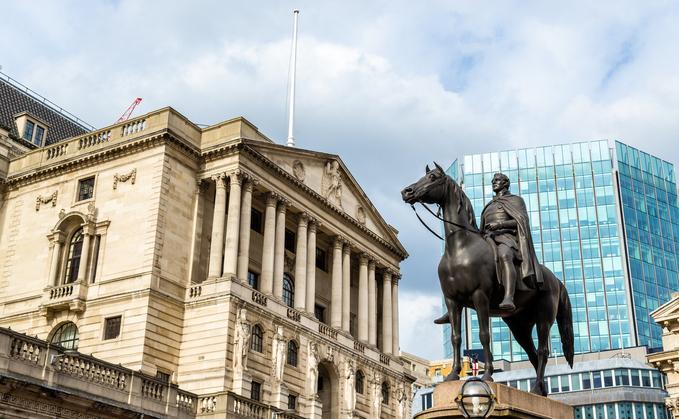The future of interest rate cuts in the UK remains clouded with uncertainty, following recent comments from the Governor of the Bank of England. In a statement that has stirred speculation among economists and investors, the Bank’s head highlighted the complexities surrounding future monetary policy decisions, specifically considering fluctuating tariffs and economic indicators. As the nation grapples with the ramifications of inflation and global market pressures, the anticipation for potential rate adjustments continues to grow, leaving many to question how swiftly and decisively the Bank will respond. This article delves into the implications of the Bank’s stance, the factors influencing its decisions, and what this means for borrowers and the broader economy.
Impact of Tariff Changes on Monetary Policy Expectations
The recent adjustments to tariffs have injected a layer of unpredictability into the UK‚Äôs monetary policy landscape. As businesses grapple with the ramifications of these changes, the Bank of England’s governor has highlighted how these developments could affect inflation and economic growth, leading to a more cautious approach in adjusting interest rates. Underlying inflationary pressures, influenced by the cost of imports, may force the Bank to reconsider its timeline for rate cuts, creating uncertainty about how quickly monetary policies can respond to evolving economic conditions.
Market analysts are now closely monitoring key indicators, such as consumer spending and business investment trends, which are likely to shift as companies adjust to new tariff structures. This recalibration could lead to varied economic outcomes that influence the Bank’s decisions moving forward.Key factors include:
- The volatility of import prices: Higher tariffs may lead to increased input costs, affecting corporate profit margins.
- Consumer behavior changes: Shifts in spending habits could impact inflation rates in unpredictable ways.
- Global economic trends: The interconnectedness of economies means that external pressures could ripple back to the UK, complicating monetary policy decisions.
Bank of England’s Challenges in Navigating Economic Uncertainty
The Bank of England is currently at a crossroads,grappling with a multitude of factors that complicate its ability to implement timely rate cuts. Recent discussions have highlighted a precarious economic landscape marked by volatile tariffs and shifting international trade dynamics, which pose significant risks to monetary policy effectiveness. Amidst this uncertainty,the central bank’s mandate to ensure economic stability becomes increasingly challenging as it must balance the immediate pressures of inflation against the risk of stifling growth. Key elements such as consumer confidence and business investment are teetering on the edge,and the Bank‚Äôs decisions may hinge on unpredictable global developments.
Moreover, the complexities surrounding domestic economic conditions necessitate a cautious approach. Analysts suggest that the Bank should closely monitor several critical indicators, including:
- Inflation rates – to assess price stability
- Consumer spending – as a gauge of economic health
- Employment metrics – to determine workforce resilience
The interdependence of these factors creates a delicate balancing act for policymakers who must remain vigilant in response to shifts in both domestic and global economies. As the Bank navigates this turbulent terrain, the implications of its decisions will undoubtedly resonate across the broader financial landscape, influencing everything from mortgage rates to investment strategies.
Recommendations for Investors Amidst Rate Cut Speculations
In the face of potential interest rate cuts, investors should recalibrate their strategies to navigate the evolving financial landscape. With uncertainty prevailing,it is prudent to adopt a cautious yet proactive approach. Focus on diversification across asset classes may provide a buffer against volatility.Consider the following strategies:
- Keep a Balanced Portfolio: Ensure that your investments are well-distributed across equities, bonds, and choice assets to mitigate risks associated with rate fluctuations.
- Consider Dividend Stocks: High-yield stocks can offer a level of stability and generate income,which may become increasingly valuable if rates decline.
- Monitor Economic Indicators: Stay informed on key economic metrics,such as inflation rates and employment figures,which can influence the timing and scale of any rate adjustments.
Additionally, investors should scrutinize sectors that historically benefit from low-interest environments. For instance, real estate and utilities often perform well as borrowing costs decrease. Understanding how these sectors correlate with monetary policy can guide investment choices. Below is a simplified comparison of key sectors:
| Sector | Performance with Rate Cuts | Risk Level |
|---|---|---|
| Real Estate | Positive correlation | Medium |
| Utilities | Stable | Low |
| Consumer Cyclicals | Potentially positive | Medium to high |
| Financials | Negative correlation | Medium |
In Summary
the future trajectory of interest rate cuts in the UK remains clouded with uncertainty, as highlighted by recent comments from the Bank of England’s governor. The interplay between evolving economic conditions,potential tariff implications,and inflationary pressures complicates the outlook for monetary policy. As stakeholders await further clarity, the central bank’s approach will be closely monitored for indications of its next steps amidst a shifting global landscape. Investors, consumers, and businesses alike will need to navigate this uncertain terrain, underscoring the critical importance of timely economic analysis and informed decision-making in the months ahead.







